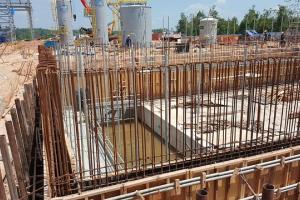Stability of Earth Retaining Structures
Stability of earth retaining structures
In case of stone/brick masonary:
-
It is strong in compression and weak in tension so no tension should be allowed in any part of the retaining wall, especially the base of the supporting wall.
-
The maximum base pressure applied should not be greater than the safe bearing capacity of the wall.
-
The wall should be safe from overturning.
-
Factor of safety should be considered. Factor of safety should not be less than 2 for lateral forces and 1.5 for overall net forces.
Slope is defined as:
The inclined boundary layer/surface of materials between earth and the air.
Purpose of slope:
As the soil cannot stand vertical, thus the phenomena of slopes is used to keep the soil intact and stable.
Uses:
Earth embankments/slopes are commonly required on railways, roads, earth dams etc. The stability of these slopes must therefore be thoroughly analysed as their failure may lead to loss of human life as well as economic loss
Failure of slopes
The failure of slope occurs when the shear stress of the soil exceeds its shear strength OR when the pushing (disturbing) forces becomes greater than the resisting forces. The slope fails when it is not properly designed. The forces causing the failure are
- Gravitational Forces
- Seepage Forces
Types of failure of slopes
There are two types of failures:
-
Parallel to the slope: In this case the particles move down parallel to the slope. Parallel type of slope failure occurs in the case of cohesion-less soil.
-
Curved Shape failure: In this case the slope failure surface is of curved shape, like an arc of a circle. This occurs in case of cohesive soil.









